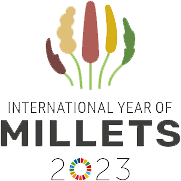

REGISTER NOWnavigate_next

Carbon created creatures Can carbon combat climate change?
With longer summers, extreme winters, wildfires, rising sea levels, heatwaves and other
calamitous events, the impact of climate change is evident. In 2015, in Paris, the nations
of the world committed themselves to trying their best to prevent the planet warming by
more than 1.5°C from its pre-industrial state. Despite low per-capita emissions (1.8
tonnes CO2), India is the third-largest emitter globally, emitting a net 2.9 gigatonnes of
carbon-dioxide equivalent (GtCO2) every year as of 2019. The Sixth Assessment Report
(AR6) of the Intergovernmental Panel on Climate Change (IPCC) tells us that global emissions
need to be reduced by 43% within this decade for us to have a fighting chance of
limiting global temperature rises to within 1.5° C. How, then can India realize the promise
of its green transformation ?
Net zero refers to a state, wherein the emissions of greenhouse
gases by a country are offset by absorption, or removal, through futuristic technologies,
so that the net emissions from the country are zero. Prime Minister Narendra Modi,
announced at COP26 that India would reach net-zero emissions by 2070. India has also
set for itself, reducing total projected carbon emissions by an additional 1 billion tonnes.
India has the potential to create 287 gigatonnes of carbon space for the world. In the LoS
scenario, India could reduce annual emissions from a historical trajectory of 11.8 GtCO2
to 1.9 GtCO2 by 2070, a 90% reduction in economic emissions intensity compared with
2019. It can reach 0.4 GtCO2 by 2050 in the accelerated scenario, with a potential to get
to its net-zero-by-2070. Global warming is one of the most pressing issues today and
emissions are contributing to climate change, which is a real and present threat to planet
Earth. One way to mitigate climate change is by reducing their carbon emissions. This
can be done through a practice called carbon offsetting or decarbonising. Decarbonizing
refers to the process of reducing carbon emissions and transitioning to a low-carbon
economy.


AGRICULTURAL TECHNOLOGIES FOR
Decarbonization
India’s green revolution, helped it, overcome a hunger crisis. The time is now ripe for India’s
second green revolution, to shift away from a carbon-intensive legacy growth model and
leapfrog into a green growth model. Agriculture is a significant contributor to global
greenhouse gas emissions, accounting for approximately 25% of total emissions.
By implementing changes such as Carbon Farming, Conservation Agriculture, Agroforestry, Afforestation, Reforestation, Farming System Approaches, Organic Farming, Natural Farming, Eco Agriculture, LEISA, Crop Livestock Integration, Bioenergy Crops, Regenerative Agriculture, Biodynamic Farming, Mountain Farming, Green Synthesis of Fertilizers, Cropping System Approaches, Inclusion of Pulses, Drought Management, Fallow Management, Grassland and Pasture Management, Cropping Systems, Crop Diversification can bring back overall sustainability of the systems.
By implementing changes such as Carbon Farming, Conservation Agriculture, Agroforestry, Afforestation, Reforestation, Farming System Approaches, Organic Farming, Natural Farming, Eco Agriculture, LEISA, Crop Livestock Integration, Bioenergy Crops, Regenerative Agriculture, Biodynamic Farming, Mountain Farming, Green Synthesis of Fertilizers, Cropping System Approaches, Inclusion of Pulses, Drought Management, Fallow Management, Grassland and Pasture Management, Cropping Systems, Crop Diversification can bring back overall sustainability of the systems.
Monitoring and reporting progress of changes in
growing environment such as DSR,SRI,SCI in rice, growing of biotic and abiotic stress tolerant
cultivars, Biorational and biocontrol agents in agriculture, IPM for controlling pests and many
such practices, can reduce greenhouse gas emissions and mitigate the impacts of climate
change, eventually lowering the carbon footprint.
Government of India’s flagships initiatives such as Ethanol revolution, Nano Urea, Nano DAP, Nano Zinc, neem coated urea, Manure management, LCC, PM KUSUM,PM PRANAM, solar-powered agro vehicle, Mangrove restoration and conservation, nature based solutions, residue management, enhancement of biodiversity & ecosystem services ,conservation, agro tourism towards carbon neutral villages can increase the resilience of agricultural systems and improve food security. Sadguru’s Save Soil movement and implementing practices that promote soil organic carbon, knowing, soil stores more carbon than plants and the atmosphere combined, farmers can earn now carbon credits and trading of such carbon credits can augment farm income, bring sustainability and make agricultural systems more resilient that benefit both people and the planet. India is all set to launch the Carbon Credit Trading Scheme soon that will ensure a robust and credible domestic carbon market.
Government of India’s flagships initiatives such as Ethanol revolution, Nano Urea, Nano DAP, Nano Zinc, neem coated urea, Manure management, LCC, PM KUSUM,PM PRANAM, solar-powered agro vehicle, Mangrove restoration and conservation, nature based solutions, residue management, enhancement of biodiversity & ecosystem services ,conservation, agro tourism towards carbon neutral villages can increase the resilience of agricultural systems and improve food security. Sadguru’s Save Soil movement and implementing practices that promote soil organic carbon, knowing, soil stores more carbon than plants and the atmosphere combined, farmers can earn now carbon credits and trading of such carbon credits can augment farm income, bring sustainability and make agricultural systems more resilient that benefit both people and the planet. India is all set to launch the Carbon Credit Trading Scheme soon that will ensure a robust and credible domestic carbon market.





